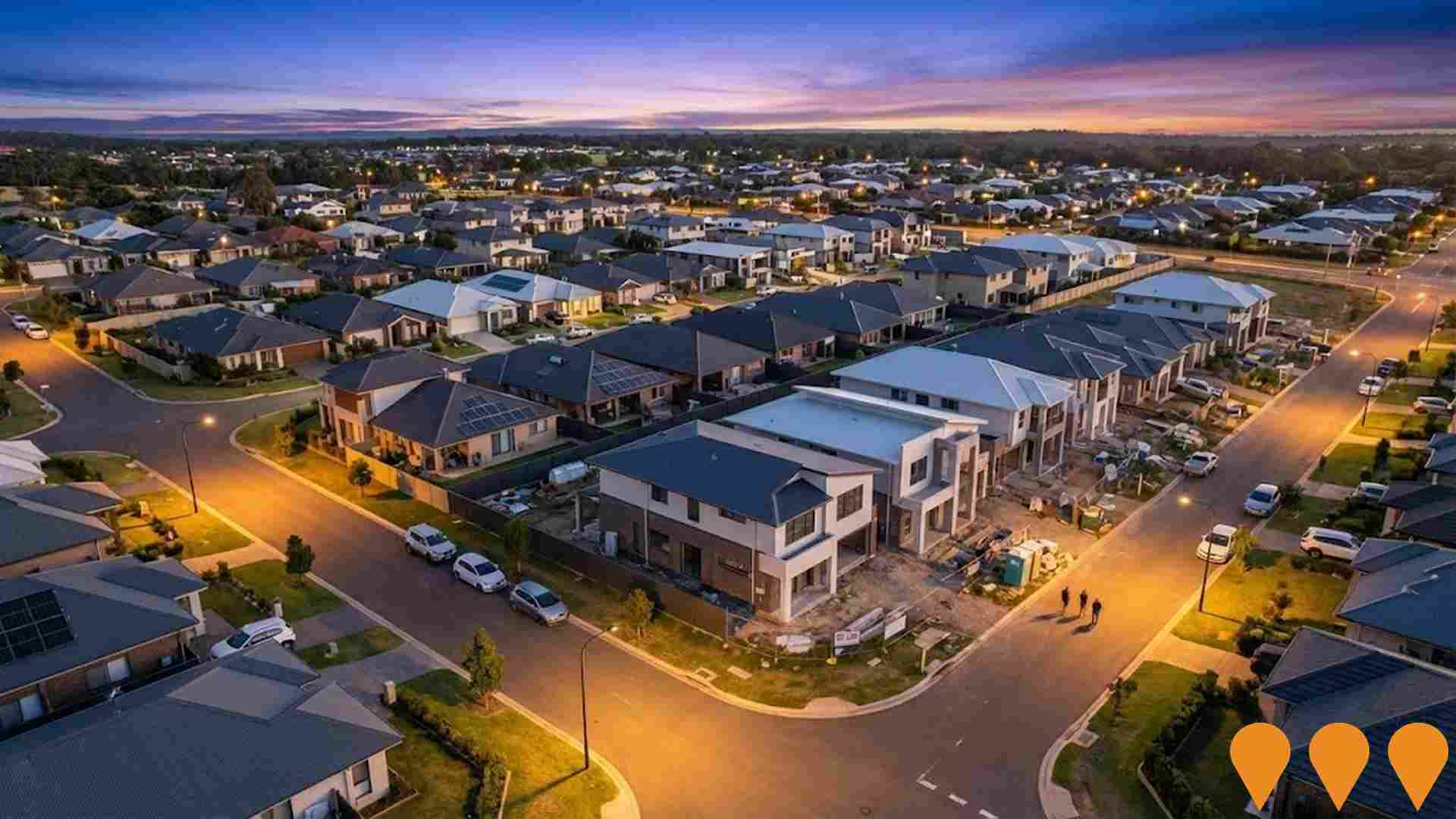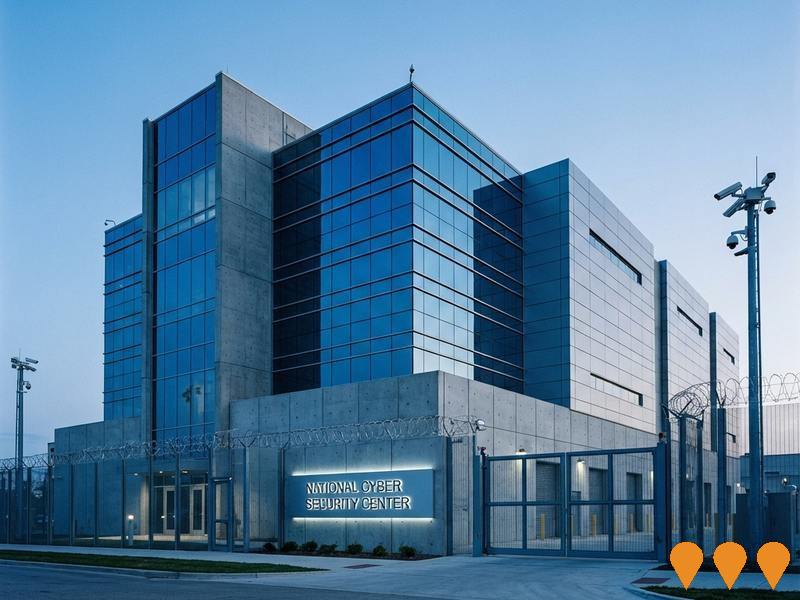Chart Color Schemes
est. as @ -- *
ABS ERP | -- people | --
2021 Census | -- people
Sales Activity
Curious about local property values? Filter the chart to assess the volume and appreciation (including resales) trends and regional comparisons, or scroll to the map below view this information at an individual property level.
Find a Recent Sale
Sales Detail
Population
Williamtown - Medowie - Karuah lies within the top quartile of areas nationally for population growth performance according to AreaSearch analysis of recent, and medium to long-term trends
Based on AreaSearch's analysis, Williamtown - Medowie - Karuah's population is around 17,152 as of Nov 2025. This reflects an increase of 2,132 people (14.2%) since the 2021 Census, which reported a population of 15,020 people. The change is inferred from the estimated resident population of 16,615 from the ABS as of June 2024 and an additional 757 validated new addresses since the Census date. This level of population equates to a density ratio of 47 persons per square kilometer. Williamtown - Medowie - Karuah's 14.2% growth since the 2021 census exceeded the non-metro area (5.1%), along with the SA3 area, marking it as a growth leader in the region. Population growth for the area was primarily driven by interstate migration that contributed approximately 73.4% of overall population gains during recent periods, although all drivers including natural growth and overseas migration were positive factors.
AreaSearch is adopting ABS/Geoscience Australia projections for each SA2 area, as released in 2024 with 2022 as the base year. For any SA2 areas not covered by this data, AreaSearch is utilising the NSW State Government's SA2 level projections, as released in 2022 with 2021 as the base year. Growth rates by age group from these aggregations are also applied to all areas for years 2032 to 2041. Moving forward with demographic trends, a significant population increase in the top quartile of Australian non-metropolitan areas is forecast, with the area expected to expand by 7,211 persons to 2041 based on the latest population numbers, recording a gain of 38.9% in total over the 17 years.
Frequently Asked Questions - Population
Development
AreaSearch assessment of residential development activity positions Williamtown - Medowie - Karuah among the top 25% of areas assessed nationwide
Williamtown-Medowie-Karuah has seen approximately 224 new home approvals per year over the past five financial years, totalling 1,120 homes. As of FY-26, 52 approvals have been recorded. On average, about 1.9 new residents arrive annually for each new home approved between FY-21 and FY-25, indicating balanced supply and demand. However, this has increased to 4.6 people per dwelling over the past two financial years, suggesting growing popularity and potential undersupply. The average construction value of development projects is $239,000, lower than regional levels, offering more affordable housing options for buyers.
This year alone, there have been $101.8 million in commercial approvals, reflecting high local commercial activity. Compared to the rest of NSW, Williamtown-Medowie-Karuah has 136.0% more new home approvals per person, providing ample choice for buyers despite recent easing in construction activity. This area shows strong developer confidence, with activity above national averages. New development consists of 70.0% detached dwellings and 30.0% attached dwellings, expanding medium-density options and catering to various price brackets. Williamtown-Medowie-Karuah currently has around 148 people per dwelling approval, characteristic of a growth area. Future projections indicate an addition of 6,674 residents by 2041.
Current development appears well-matched to future needs, supporting steady market conditions without extreme price pressure.
Frequently Asked Questions - Development
Infrastructure
Williamtown - Medowie - Karuah has moderate levels of nearby infrastructure activity, ranking in the 43rdth percentile nationally
Changes to local infrastructure significantly influence an area's performance. AreaSearch has identified 31 projects likely to impact the area. Key projects include Stockton Rifle Range Development - Fern Bay, Medowie Precinct F Residential Development, The Gardens Medowie, and Tall Trees Estate Medowie. Below is a list of those most relevant.
Professional plan users can use the search below to filter and access additional projects.
INFRASTRUCTURE SEARCH
 Denotes AI-based impression for illustrative purposes only, not to be taken as definitive under any circumstances. Please follow links and conduct other investigations from the project's source for actual imagery. Developers and project owners wishing us to use original imagery please Contact Us and we will do so.
Denotes AI-based impression for illustrative purposes only, not to be taken as definitive under any circumstances. Please follow links and conduct other investigations from the project's source for actual imagery. Developers and project owners wishing us to use original imagery please Contact Us and we will do so.
Frequently Asked Questions - Infrastructure
The Bower Medowie
A completed 127-hectare residential community developed by McCloy Group in Medowie, NSW. The boutique development featured 474 homesites ranging from 500 to 5000 square meters across 57 hectares, with 70 hectares preserved as state conservation area and open space. The project launched in 2016 and sold out in December 2023 after a successful 7-year development period. Features include Bower Reserve (a 10,000m2 neighborhood park), walking tracks, underground power, town water, sewerage, and NBN. The development also includes a planned retirement village component with 100 independent living villas valued at $45 million.
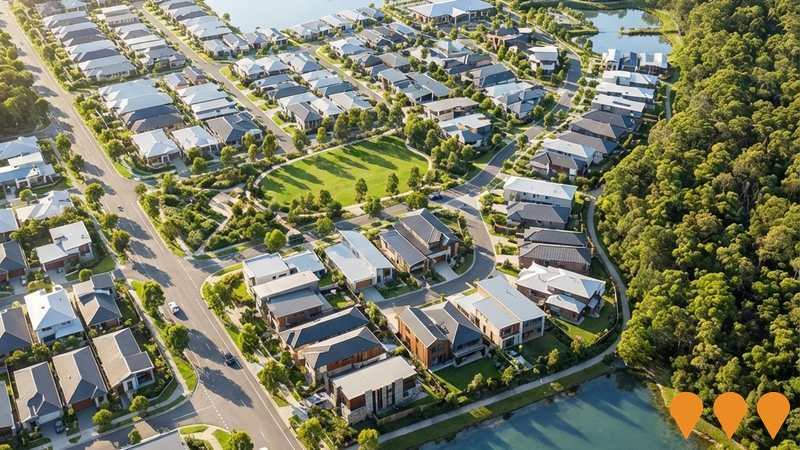
Stockton Rifle Range Development - Fern Bay
Defence Housing Australia $210 million development of former rifle range into 232-lot medium-density residential subdivision. Mix of townhouses, apartments, eco-homes and multi-dwelling housing with 1.6 hectares of park areas and beach access.
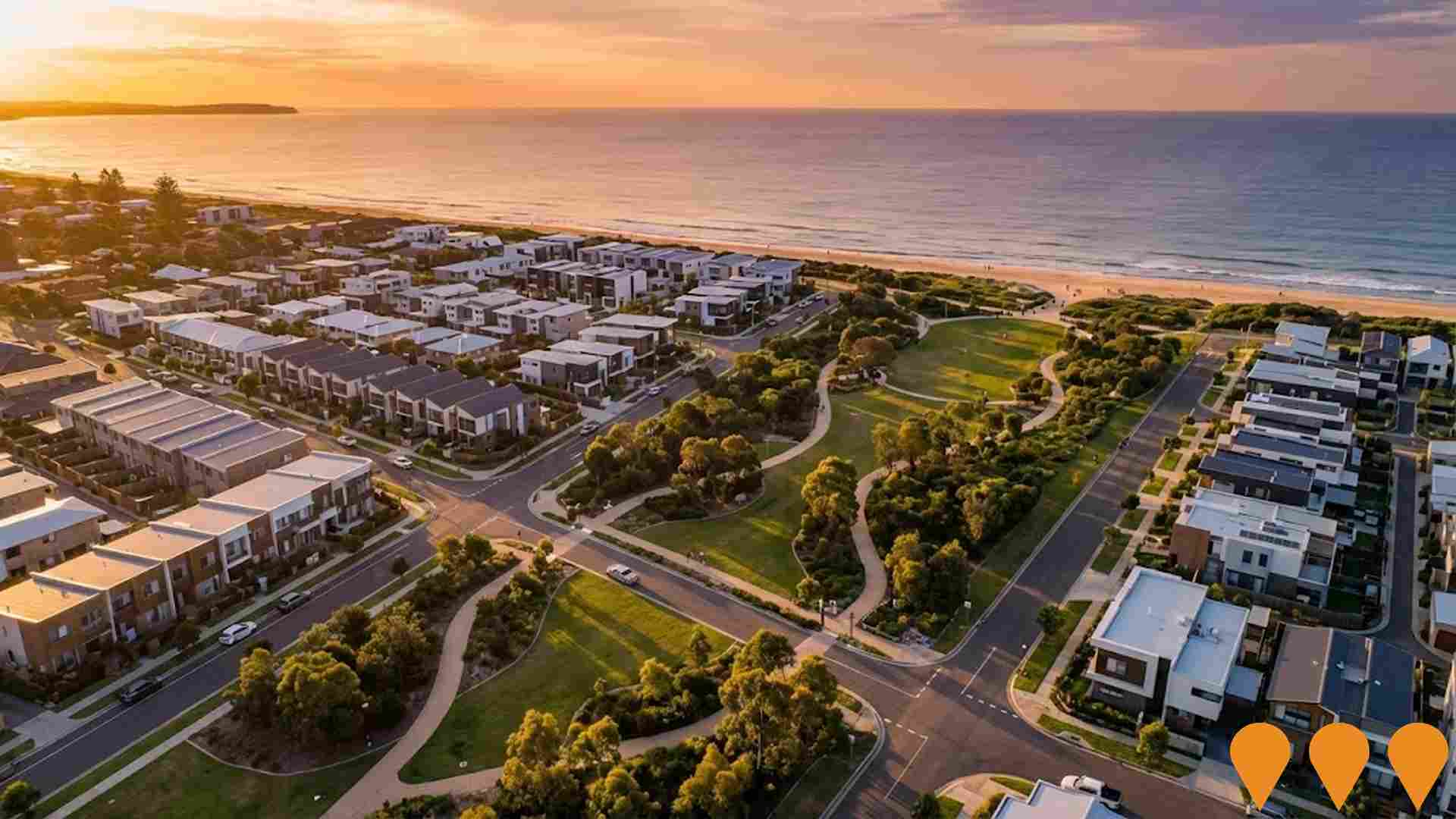
Fern Bay and North Stockton Strategy
Joint 20-year blueprint by Port Stephens and Newcastle councils for area between Hunter River and Stockton Beach. Includes town centre development, coastal walk from Stockton to Tomaree Headland, and ferry terminal.
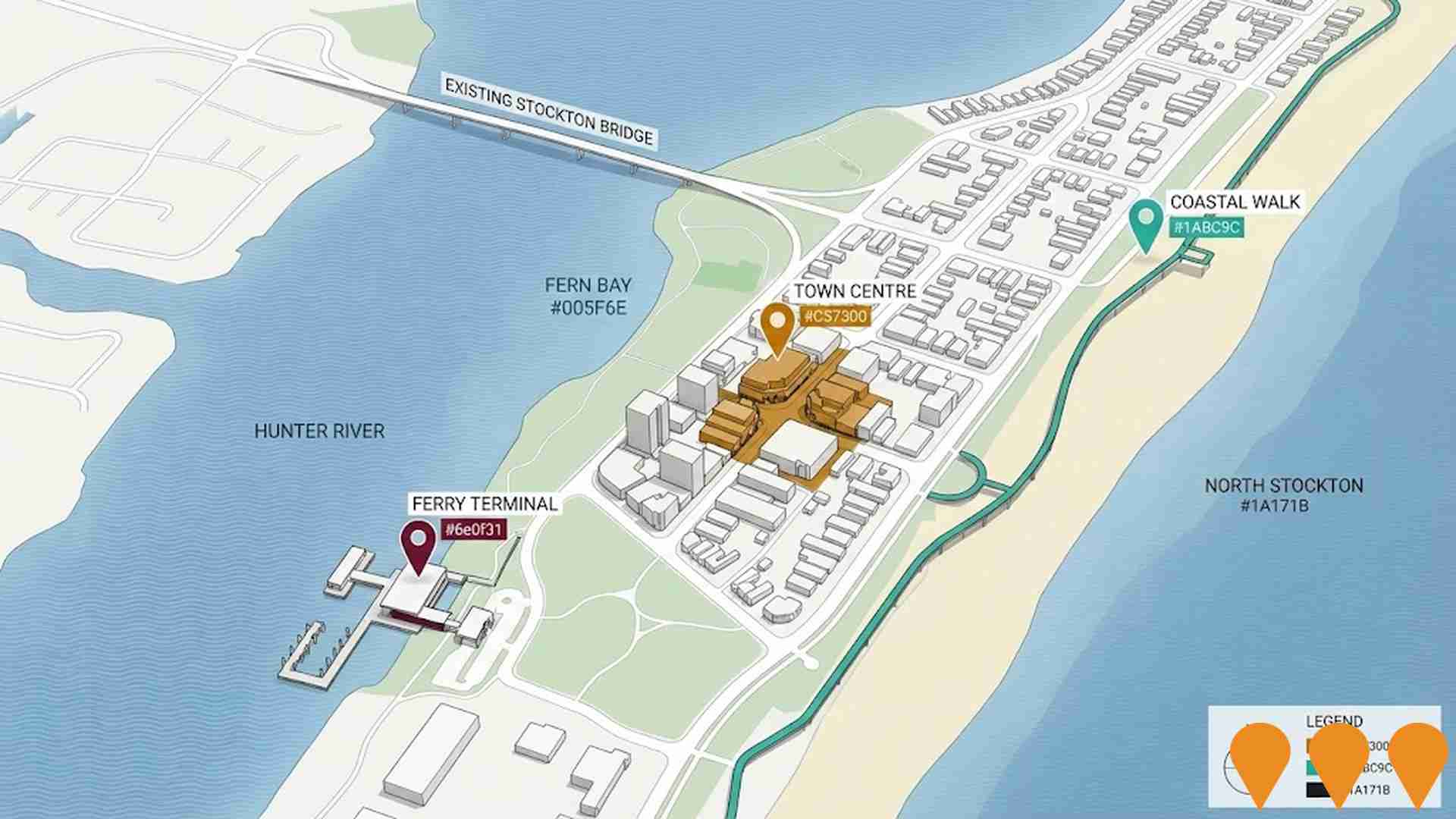
Medowie New High School
A new public high school by the NSW Government to serve the growing Medowie community. Planning approval granted July 2025, construction to begin September 2025. The school will feature modern classrooms including specialist support classes, specialist workshops and labs, multipurpose hall, library, administration facilities, outdoor play areas, and sports facilities. Part of the $1.4 billion regional NSW schools investment.
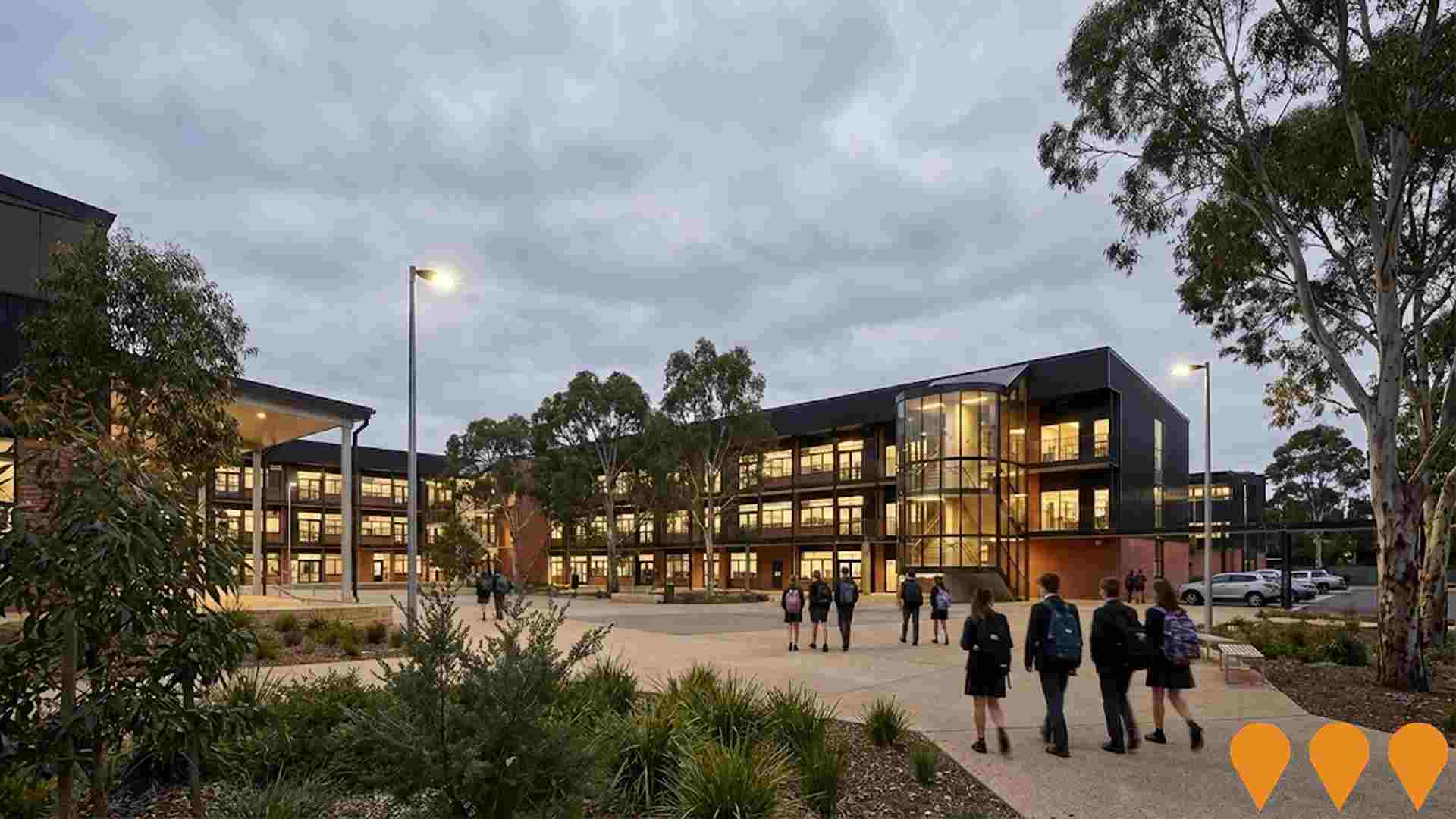
791 Medowie Road Childcare Centre
A brand-new architecturally designed 128-place childcare centre with state-of-the-art infrastructure including air-conditioning, commercial kitchen, LED lighting, and compliant safety systems. Features multiple playrooms, cot rooms, wet areas, admin facilities, professionally landscaped outdoor play areas, off-street parking and dual vehicle access. Located in the thriving Medowie township to support local families amid residential growth.

Catherine McAuley Catholic Primary School Medowie
A new Catholic primary school component within the existing Catherine McAuley education precinct, developed by the Maitland-Newcastle Diocese. The primary school will open in 2026 as part of a comprehensive educational precinct including early education centre, primary school, and secondary school. Construction is underway with Indigenous artefacts discovered during excavation being showcased at the neighbouring college. The school will operate under the patronage of Catherine McAuley, grounded in Mercy traditions.

Nelson Bay Road Duplication - Williamtown to Bobs Farm
NSW Government $275 million investment to improve safety and travel times on Nelson Bay Road including duplicating the road from Williamtown to Bobs Farm. Major connection between Newcastle Airport, RAAF base and Nelson Bay used by 25,000 motorists daily.

Tallowood Lifestyle Resort
Over-50s lifestyle resort featuring 215 two-bedroom homes with resort-style amenities including clubhouse, indoor/outdoor heated pools, covered bowling green, gym, spa, cinema, and consulting rooms. Gated community with premium facilities developed by Vivacity Property. Construction is progressing in stages with completion expected by late 2024/early 2025.
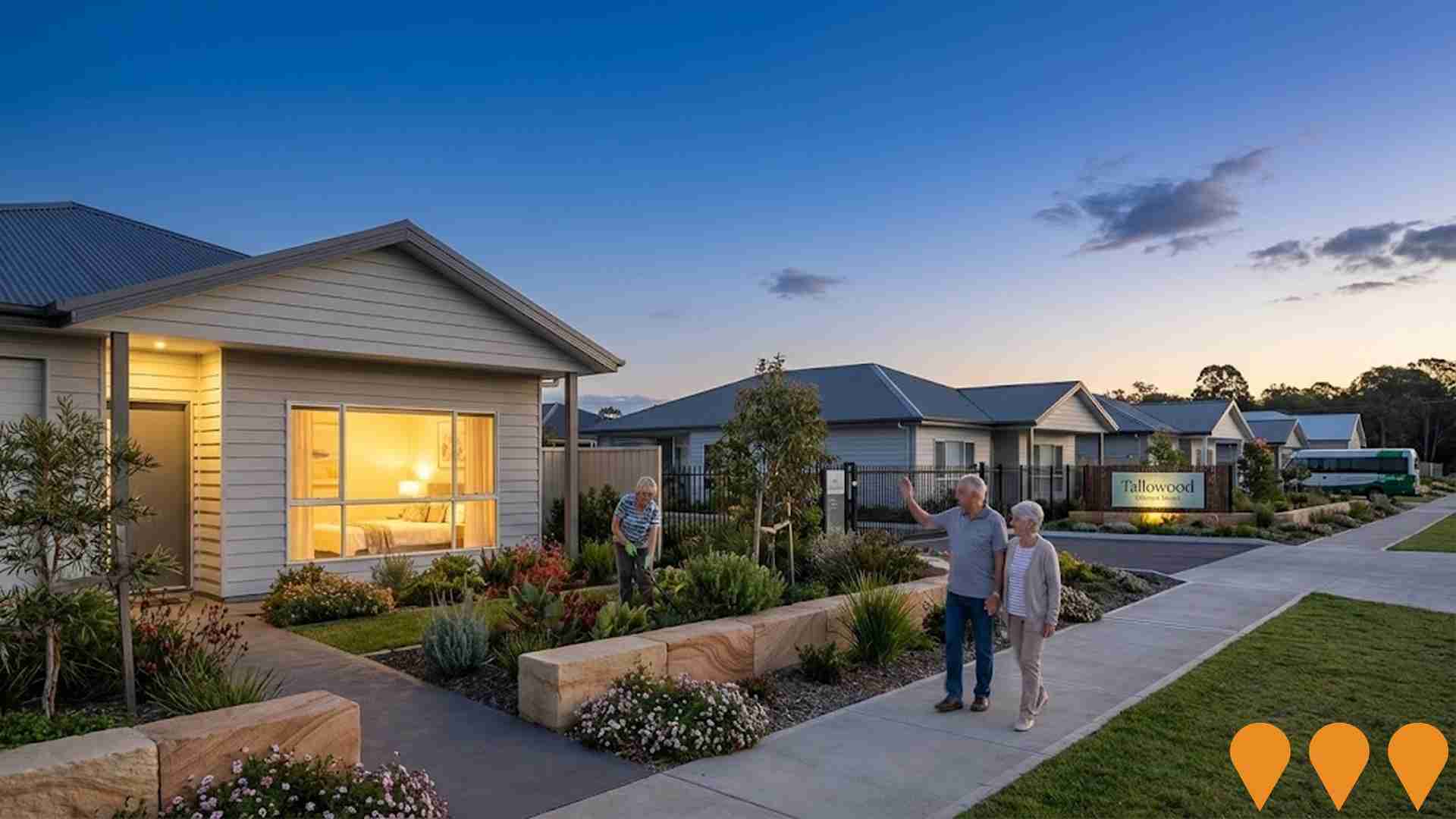
Employment
Despite maintaining a low unemployment rate of 3.4%, Williamtown - Medowie - Karuah has experienced recent job losses, resulting in a below average employment performance ranking when compared nationally
Williamtown-Medowie-Karuah has a balanced workforce with both white and blue collar jobs, prominent essential services sectors, and an unemployment rate of 3.4%. As of June 2025, there are 7,572 employed residents, which is 0.3% lower than the Rest of NSW's rate of 3.7%.
Workforce participation stands at 60.7%, similar to the regional average of 56.4%. Key employment sectors include health care & social assistance, public administration & safety, and construction. The area specializes in public administration & safety, with an employment share 1.6 times higher than the regional level. Agriculture, forestry & fishing has limited presence, at 1.7% compared to 5.3% regionally.
Many residents may commute elsewhere for work based on census data. Between June 2024 and June 2025, labour force decreased by 4.3%, employment declined by 4.5%, causing unemployment to rise by 0.2 percentage points. This contrasts with Rest of NSW where employment contracted by 0.1%, labour force grew by 0.3%, and unemployment rose by 0.4 percentage points. Jobs and Skills Australia's national employment forecasts from May 2025 project a 6.6% increase over five years and 13.7% over ten years. Applying these projections to Williamtown-Medowie-Karuah's employment mix suggests local growth of approximately 6.1% over five years and 12.9% over ten years, though this is a simplified extrapolation for illustrative purposes only.
Frequently Asked Questions - Employment
Income
Income levels align closely with national averages, indicating typical economic conditions for Australian communities according to AreaSearch analysis
AreaSearch's latest postcode level ATO data for financial year 2022 shows that income in Williamtown - Medowie - Karuah is aligned with national averages. The median income is $52,518 and the average income stands at $64,307. In comparison, Rest of NSW has a median income of $49,459 and an average income of $62,998. Based on Wage Price Index growth of 12.61% since financial year 2022, current estimates project the median income to be approximately $59,141 and the average income at around $72,416 by September 2025. Census data indicates that household, family, and personal incomes in Williamtown - Medowie - Karuah rank modestly, between the 39th and 51st percentiles. Income analysis reveals that 34.8% of the population (5,968 individuals) fall within the $1,500 to $2,999 income range, mirroring the regional average of 29.9%. High housing costs consume 15.3% of income, but strong earnings place disposable income at the 53rd percentile. The area's SEIFA income ranking places it in the 5th decile.
Frequently Asked Questions - Income
Housing
Williamtown - Medowie - Karuah is characterized by a predominantly suburban housing profile, with ownership patterns similar to the broader region
In Williamtown-Medowie-Karuah, as per the latest Census, 95.9% of dwellings were houses, with 4.1% being semi-detached, apartments, or other types. This compares to Non-Metro NSW's 81.1% houses and 18.9% other dwellings. Home ownership in Williamtown-Medowie-Karuah stood at 36.5%, with mortgaged dwellings at 42.6% and rented ones at 20.9%. The median monthly mortgage repayment was $1,900, higher than Non-Metro NSW's average of $1,733. The median weekly rent was $400, compared to Non-Metro NSW's $360. Nationally, Williamtown-Medowie-Karuah's mortgage repayments exceeded the Australian average of $1,863, while rents were higher than the national figure of $375.
Frequently Asked Questions - Housing
Household Composition
Williamtown - Medowie - Karuah features high concentrations of family households, with a higher-than-average median household size
Family households comprise 79.4% of all households, including 36.1% couples with children, 30.8% couples without children, and 11.8% single parent families. Non-family households account for the remaining 20.6%, with lone person households at 18.9% and group households comprising 1.7%. The median household size is 2.8 people, larger than the Rest of NSW average of 2.4.
Frequently Asked Questions - Households
Local Schools & Education
Educational outcomes in Williamtown - Medowie - Karuah fall within the lower quartile nationally, indicating opportunities for improvement in qualification attainment
The area's university qualification rate is 14.4%, significantly lower than NSW's average of 32.2%. Bachelor degrees are most common at 10.3%, followed by postgraduate qualifications (2.4%) and graduate diplomas (1.7%). Vocational credentials are prevalent, with 46.4% of residents aged 15+ holding them - advanced diplomas at 11.3% and certificates at 35.1%. Educational participation is high, with 29.9% currently enrolled in formal education: 11.4% in primary, 8.5% in secondary, and 3.3% in tertiary education.
Seven schools operate within Williamtown - Medowie - Karuah, educating approximately 2,452 students, with typical Australian school conditions (ICSEA: 974). The educational mix includes five primary, one secondary, and one K-12 school. School capacity exceeds residential needs (14.4 places per 100 residents vs 11.8 regionally), indicating the area serves as an educational center for the broader region. Note: where schools show 'n/a' for enrolments, please refer to parent campus.
Frequently Asked Questions - Education
Schools Detail
Nearby Services & Amenities
Transport
Transport servicing is moderate compared to other areas nationally based on assessment of service frequency, route connectivity and accessibility
Transport analysis shows 266 active transport stops in Williamtown - Medowie - Karuah area, offering a mix of bus services. These stops are covered by 130 individual routes, serving 1,596 weekly passenger trips in total. Transport accessibility is rated good, with residents on average located 214 meters from the nearest stop.
Service frequency averages 228 trips per day across all routes, translating to approximately 6 weekly trips per stop.
Frequently Asked Questions - Transport
Transport Stops Detail
Health
Health performance in Williamtown - Medowie - Karuah is well below average with prevalence of common health conditions notable across both younger and older age cohorts
Health data indicates significant health challenges in Williamtown - Medowie - Karuah, with high prevalence of common conditions across both younger and older age groups. Private health cover is prevalent at approximately 52% of the total population (~8,901 people), slightly higher than the Rest of NSW average of 49.3%.
Mental health issues (10.1%) and arthritis (10.0%) are the most common conditions in the area, while 62.9% of residents report no medical ailments, compared to 59.3% in Rest of NSW. The percentage of seniors aged 65 and over is 19.8%, lower than the Rest of NSW average of 28.1%. Health outcomes among seniors present some challenges, broadly aligning with the general population's health profile.
Frequently Asked Questions - Health
Cultural Diversity
Williamtown - Medowie - Karuah is considerably less culturally diverse than average when assessed alongside AreaSearch's national rankings for language and cultural background related metrics
Williamtown-Medowie-Karuah had a low cultural diversity, with 90.3% of its population born in Australia, 93.2% being citizens, and 96.5% speaking English only at home. Christianity was the predominant religion, comprising 55.3% of people, compared to 57.4% across Rest of NSW. The top three ancestry groups were Australian (33.8%), English (31.1%), and Scottish (7.7%).
Notably, Australian Aboriginal representation was higher at 5.2%, compared to the regional average of 4.5%. Maltese and Welsh populations were also slightly higher than the regional averages, at 0.7% and 0.6% respectively.
Frequently Asked Questions - Diversity
Age
Williamtown - Medowie - Karuah's population is slightly older than the national pattern
The median age in Williamtown-Medowie-Karuah is 40 years, which is slightly below the Rest of NSW average of 43 but above the Australian median of 38. The percentage of people aged 5-14 locally is notably higher at 13.5%, compared to the Rest of NSW average, while those aged 85 and over are under-represented at 1.5%. Between the 2021 Census and present, the proportion of people aged 75-84 has increased from 5.7% to 6.7%, while the percentage of those aged 5-14 has decreased from 14.9% to 13.5%. By 2041, population forecasts indicate significant growth in the 25-34 age group, with an increase of 1,116 people (61%) from 1,816 to 2,933.

